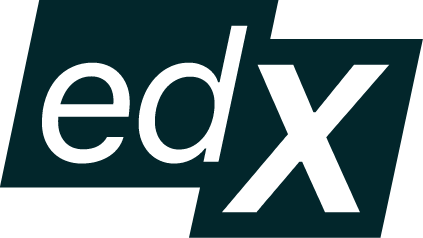
A professional portfolio is a great way to share your work with potential employers and peers in the project management industry. In fact, many tech employers require a portfolio as part of the application process.
In this guide, you will learn how to build a portfolio that stands out from the crowd and showcases your value as a professional.
Let’s start with the basics and then dive into best practices. Feel free to jump to the topic that interests you most.
- What is a project management portfolio?
- Why do employers care about my portfolio?
- How do I set myself up for success?
- Components of a competitive portfolio
- Create your project management portfolio
What is a project management portfolio?
A portfolio is a curated collection of work samples, projects, and accomplishments. Your portfolio gives you an opportunity to demonstrate your skills, expertise, creativity, and experience.
Project management professionals use their portfolios as a powerful tool to showcase their capabilities to potential employers. It allows you to present concrete evidence of what you can do, giving employers a better understanding of your knowledge and skill sets.
Why do employers care about my portfolio?
A portfolio showcases what a resume and cover letter can’t — your actual work. This gives employers a glimpse of what you can do.
Here are some key insights that employers gain from a portfolio:
- Passion & enthusiasm — Personal projects, contributions to open-source initiatives, and activity metrics indicate your passion for project management and commitment to continuous learning.
- Technical skills — Employers can view which programming languages, frameworks, and tools you use, and what your proficiency level is for each skill.
- Creativity and innovation — Employers assess whether you can develop unique solutions, implement novel ideas, or showcase out-of-the-box thinking.
- Project complexity and scale — Handling large-scale projects, managing dependencies, collaborating with teams, and delivering results within specific constraints are some examples that employers are looking for.
- Problem-solving skills — By analyzing the projects and case studies presented, employers can gauge how effectively you approach challenges and devise solutions.
- Communication and presentation skills — This highlights your ability to effectively communicate complex ideas through the clarity of project descriptions and documentation. Employers utilize these insights to see how you will interact with clients, team members, and stakeholders.
Expert advice
“Projects are your most effective currency while job searching. Feedback we have received from employers is that a great portfolio stands out because it takes the opportunity to explain the ‘why’ and ‘how’ behind your projects.”
– Cassie B., career expert at edX

How do I set myself up for success?
Our top two tips for setting yourself up for success are:
- Showcase diversity and depth
- Focus on quality and impact
These two pieces of knowledge are the foundation to creating a portfolio that works for you. Demonstrating your wide range of projects will help employers know the breadth and depth of your skills, which displays your versatility and adaptability. Prioritize quality and impact when selecting projects to include in your portfolio. This may be narrowing in on projects that are meaningful to you or have made a notable impact. Show how and where you have overcome significant challenges, implemented innovative solutions, or achieved remarkable outcomes. Employers are more interested in seeing the value you bring and the real-world impact of your work rather than the number of projects you completed.
Components of a competitive portfolio
A competitive portfolio shows that you bring value, skills, and passion to your work. So how exactly does one achieve this? Well, it differs by person and career goals, but there are a few criteria that you don’t want to neglect. We categorized these criteria into two sections below: personal bio and projects.
Personal bio
- Use a personalized photo or image. A personalized photo or image indicates that you are active on the platform, and helps the viewer connect with you.
- List your email or preferred contact information.
- Add the link to your LinkedIn profile.
- Include a tagline that represents your value and skills. Remember that the viewer of your profile may not personally know you yet. Your tagline helps them understand the type of work that you excel at. For example, “Project manager with expertise in data analysis.”
- Include a minimum of 5 skills or tools listed as proficiencies. There’s no need to list the proficiency percentage of skills or technologies.
Projects
- List 3-5 high quality projects in your portfolio. These projects should represent the type of work that you enjoy doing. If you are new to the tech industry, try to include some personal projects or freelance projects in addition to any course projects.
- Link your projects. Include links to the specific live project, and a sub-page for the individual project. Individual projects or group projects can be included. Projects demonstrate your specific proficiency in the jobs you are applying for or show a diverse skill set.
- Project details. Ensure that you write a short description of the problem being solved. Include a list of concepts, tools, and software (if applicable) used in the analysis and solution.
Pro tip:
Did you know that you can add images and screenshots to your portfolio? Easy-to-understand thumbnails, screenshots, or artifacts from each project help you stand out and keep viewers engaged.
Create your project management portfolio
Here are the steps you can take to build your project management portfolio:
First, you’ll need to decide where to host your portfolio. Now, if you’re tech-savvy, you can develop a custom website from scratch. For those of you just starting out, an easier route is to find a platform that has customizable options and innovative design templates ready to use.
Popular platforms like WordPress and Google offer free hosting and beautiful design templates to start with. For budget-friendly options, consider Wix or Squarespace. Each of these options allow you to create a basic free or low-cost website with a subdomain (example: yourname.wix.com) that you can upgrade later.
Pro tip:
A portfolio is usually presented as a web page or custom website; however, purchasing a domain can be expensive. A custom domain name makes a website appear more polished and professional, but it is not mandatory. An alternative is presenting your portfolio as a slide deck. In fact, developing your portfolio as a slide deck is an excellent way to create a prototype for your future web-based portfolio. Other free portfolio options include social media sites like Instagram and blogging sites like Tumblr.
Before you start writing and building your work samples, take a moment to outline your site map, including your page titles. Most portfolio websites have a simple site structure with just three to five pages.
If you’re using a content management system, the easiest way to do this is to start with a template. Remember, a template is yours to customize — you aren’t locked into page titles or layouts — and you’ll save time by starting with something close to what you want.
For your About section, you have one opportunity to draw the reader in with clear, compelling copy and a powerful statement that depicts your skills and accomplishments. For best results, be concise, choose action verbs, and avoid adverbs and hyperbole.
Next, select 3-5 projects that represent your best work and showcase the diversity of your skills. Depending on your area of expertise, this could include academic, professional, and personal projects such as:
- Scope management
- Risk management
- Negotiation
- Stakeholder communication planning
- Gantt Charts
- Release and Sprint Planning
Write a description of your role in each project and describe your process and results in a concise manner. For the greatest impact, select portfolio projects that you can frame within the STAR Method: Situation, Task, Action, and Result. Use numbers to highlight the impact of your work as needed.
By using this method to frame your case studies, you’ll tell a story of your specific role and actions you took to address the challenge, as well as measurable results that will speak to your knowledge of strategy and analytics.
Pro tip:
Think mobile-first. Today, it’s not enough to be mobile-friendly. In a world where everyone uses mobile devices for personal and professional purposes, design your portfolio website for mobile first. Showing that you can design content for mobile is just one more way to show employers that you know your stuff.
Before you publish your site, solicit feedback from a handful of people invested in your success. Share your test site link with mentors, friends, and people you know in the industry. Ask for specific feedback and incorporate relevant feedback to improve your portfolio.
Now you are ready to publish your portfolio! Fight the urge to wait until your portfolio is perfect to publish. While it should be polished and free of errors, it will be a living document that you continue to update and improve over time. Remember to link your live portfolio to your LinkedIn profile and resume.



